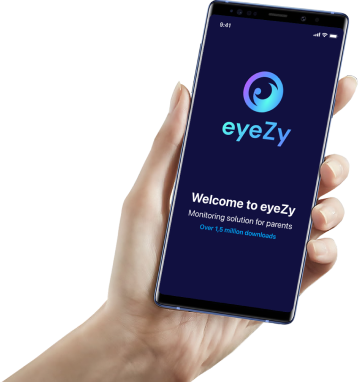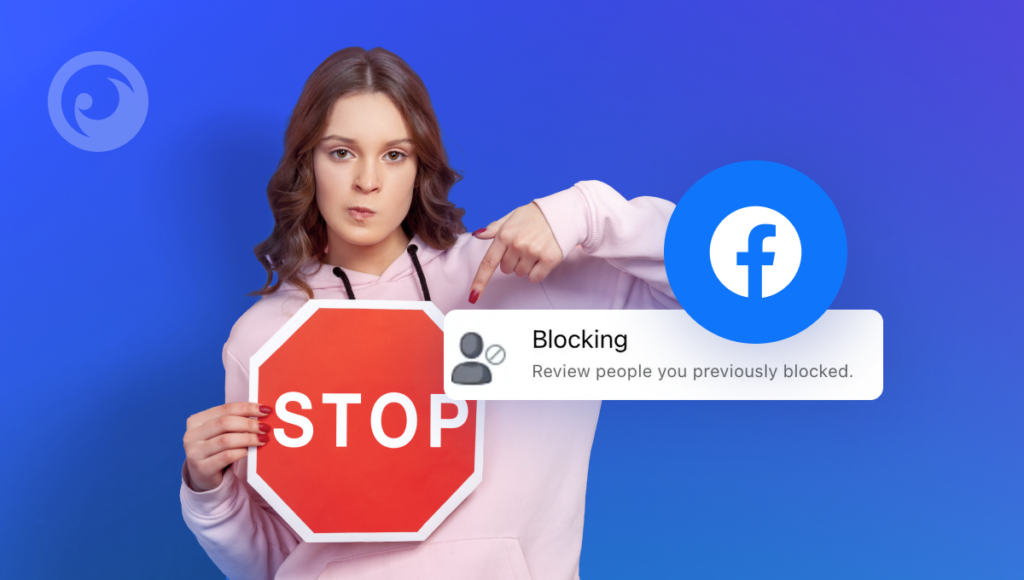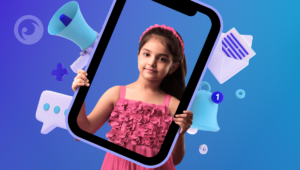
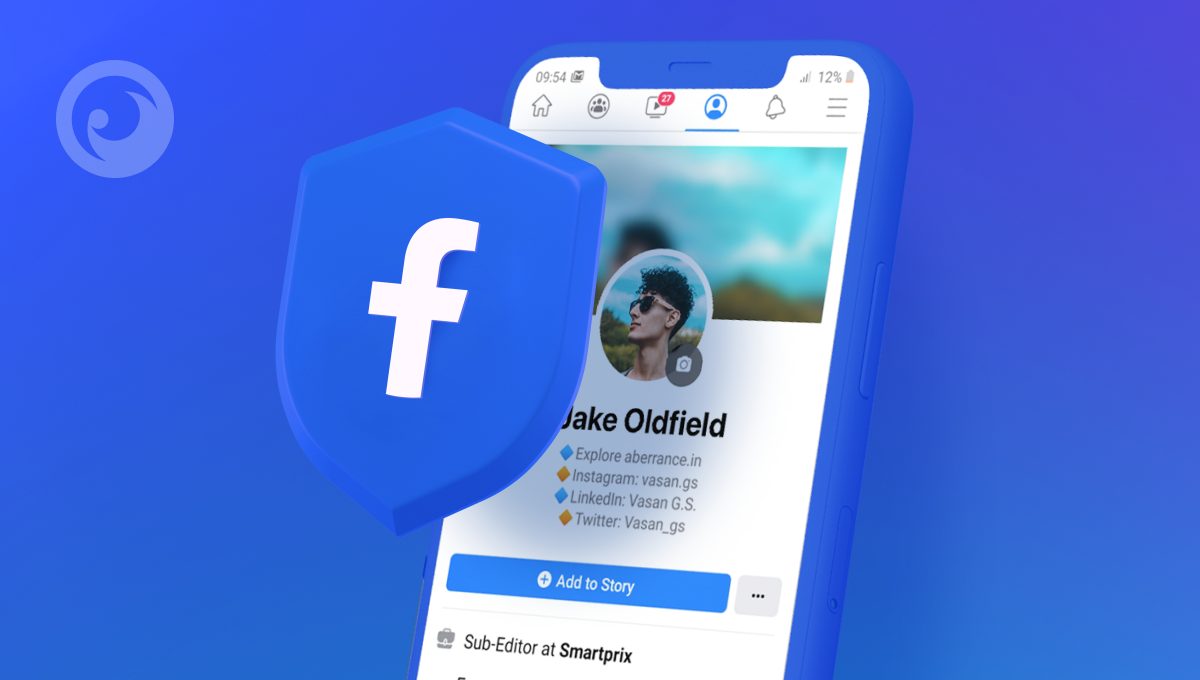
Welke sociale media komen in je op als je denkt aan veiligheid? Snapchat? Te veel verborgen foto's. Instagram? Te veel online pretenders. Facebook? Het lijkt een geweldige manier voor kinderen om verbonden te blijven.
Maar voordat je je kinderen de social media-app laat gebruiken, is het goed om in gedachten te houden dat Facebook's primaire doel is om geld te verdienen. Ze geven niet echt om iemands privacy — en dat geldt ook voor de privacy van je kind. En daarom zijn de ouderlijk toezicht-functies van Facebook niet echt zo geavanceerd.
Het moloch van de sociale media wil alles weten over je kinderen. En hoe meer connecties kinderen hebben en hoe meer ze betrokken zijn, hoe beter het is voor Facebook.
Maar als ouder heb je de plicht om je kind te beschermen. En dat gaat verder dan weten hoe je ongepaste video's op Facebook blokkeert. Of gewoon hun Facebook Messenger in de gaten houden. Je wilt alle soorten inhoud blokkeren. En vreemdelingen. Omdat er miljarden van hen wachten om verbinding te maken.
Inhoudsopgave
Schokkende statistieken over kinderen en Facebook
Eigenlijk, 32% van tieners zeggen dat ze Facebook ooit hebben gebruikt, wat aantoont dat het nog steeds een populair platform is voor velen, zelfs met de opkomst van Instagram, TikTok en andere.
Maar wat nog verrassender is, is dat 45% van kinderen onder de 13 jaar loggen al elke dag in op Facebook. Dat is een beetje zorgelijk, want zulke jonge kinderen horen geen account te hebben op Facebook, maar toch lukt het ze om er regelmatig in te komen en het te gebruiken.
Het is een echte eyeopener. Zeker als je bedenkt hoe belangrijk het is om je bewust te zijn van digitale veiligheid en leeftijdsgeschikte online ruimtes te hebben.
Begin met de ingebouwde privacytools van Facebook
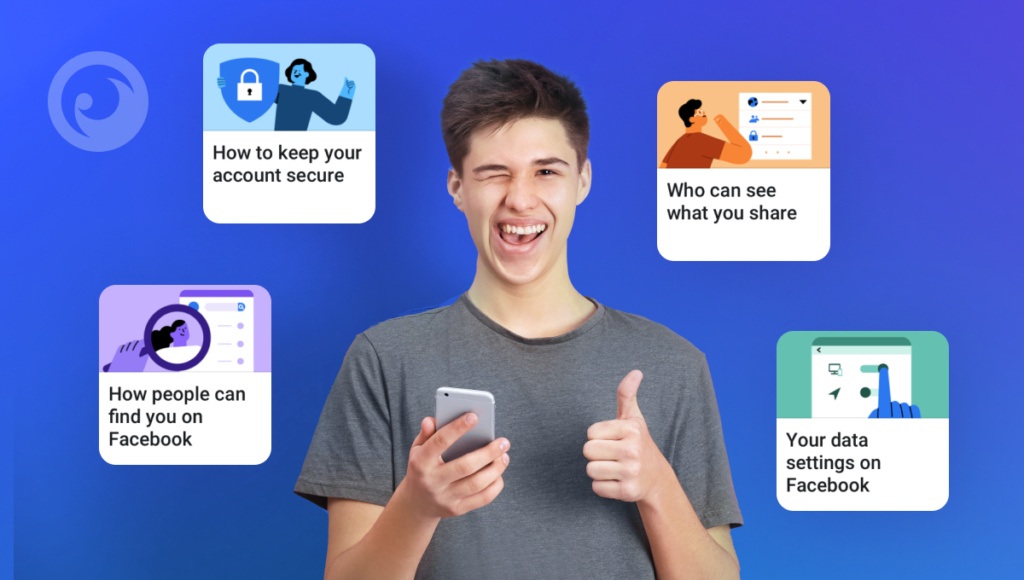
Heeft Facebook ouderlijk toezicht? Een beetje. Ze bieden basisinstellingen die je helpen je profiel te beveiligen en meer privé te blijven dan Facebook misschien zou willen. Hoewel het niet perfect is en met extra stappen die je kunt nemen om je content te beheren, is dit een solide startpunt.
1. Privacy-instellingen instellen voor het profiel van je kind
- Aanmelden bij Facebook: Gebruik uw account om toegang te krijgen tot het profiel van uw kind als ze minderjarig zijn of hun inloggegevens met u hebben gedeeld.
- Ga naar Instellingen: Klik op de naar beneden gerichte pijl in de rechterbovenhoek en selecteer vervolgens Instellingen en privacy > Instellingen.
- Privacy-instellingen: Onder de Privacy tabblad, pas de volgende instellingen aan:
- Wie kan je berichten zien: Stel dit in op "Vrienden" om de zichtbaarheid van berichten te beperken.
- Wie kan contact met je opnemen?: Kies "Vrienden van vrienden" om te beperken wie vriendverzoeken en berichten kan sturen.
- Wie kan je opzoeken: Selecteer de optie om de zoekmogelijkheden te beperken, zoals "Alleen ik" voor zoekopdrachten op telefoonnummer en e-mailadres.
2. Het activiteitenlogboek gebruiken
De Activiteitenlogboek Hiermee kun je alles bekijken wat je kind op Facebook heeft gedaan, van berichten tot 'vind ik leuk'-berichten en opmerkingen.
- Ga naar het profiel van je kind en klik op de drie puntjes (Meer opties) onder de omslagfoto.
- Kies Activiteitenlogboek om een gedetailleerde lijst van hun acties op Facebook te zien.
- Je kunt dit logboek gebruiken om berichten, interacties en andere activiteiten te controleren, zodat je inzicht krijgt in hun gedrag.
3. Accountvergrendeling inschakelen voor betere beveiliging
- Schakel het volgende in om te voorkomen dat vreemden toegang krijgen tot het profiel of de persoonlijke gegevens van uw kind Profiel slot.
- Ga naar Instellingen > Privacy > Profiel en tagging.
- inschakelen Profiel slot om te voorkomen dat mensen die geen vrienden zijn details zoals profielfoto en omslagfoto kunnen zien.
4. Goedkeuring achteraf instellen
Facebook heeft een functie genaamd Tijdlijn waarmee je berichten kunt goedkeuren voordat ze op het profiel van je kind verschijnen. Dit kan vooral handig zijn om te voorkomen dat ze iets ongepasts delen.
- Ga naar Instellingen > Profiel en tagging.
- Onder de Tijdlijn en taggen sectie, schakel Berichten bekijken waarin vrienden je taggen voordat ze op je tijdlijn verschijnen.
- Dit geeft je de mogelijkheid om inhoud goed of af te keuren voordat het zichtbaar is.
5. Beperken wie vriendschapsverzoeken kan sturen
Beperken wie vriendschapsverzoeken kan sturen is een eenvoudige maar effectieve manier om de vriendenlijst van je kind veiliger te houden.
- Ga naar Instellingen > Privacy.
- Onder Wie kan je vriendschapsverzoeken sturen?kiezen Vrienden van Vrienden om verzoeken van vreemden te beperken.
6. Houd de Messenger van je kind in de gaten
Als je kind Facebook Messenger gebruikt, is het belangrijk om hun gesprekken te controleren op mogelijke risico's.
- Facebook Messenger heeft geen ingebouwde functies voor ouderlijk toezicht, maar je kunt hun chatgeschiedenis direct in de app controleren.
- Om toezicht te houden, ga je naar hun Messenger-app of gebruik je het Facebook Activity Log om te zien met wie ze chatten.
7. Meldingen en app-machtigingen beheren
- Meldingen beperken: Ga naar Instellingen > Meldingen om aan te passen hoe en wanneer je kind meldingen krijgt, zodat je je schermtijd beter kunt beheren.
- App-instellingen: Onder Instellingenga naar Apps en websites om te beheren welke apps van derden je kind aan zijn Facebook-account heeft gekoppeld. Je kunt apps verwijderen die je niet wilt dat ze gebruiken.
Hoe privé zijn ze? Ontdek het met een Privacy Checkup
Als je wilt zien hoe privé (of niet privé) je kind is op Facebook, is het een goed idee om een Privacy Checkup uit te voeren. Zo doe je dat:
- Klik op de pijl omlaag rechtsboven op Facebook.
- Klik op Instellingen en privacy.
- Klik op Privacycontrole.
Dat is het. Nu kun je zien wie info op hun profiel kan zien, wie eerdere en toekomstige berichten kan zien en wie er misschien al op hun geblokkeerde lijst staan.
Breng ouderlijk toezicht op Facebook verder met Eyezy
Wie de privacy op Facebook naar een hoger niveau wil tillen, kan het volgende overwegen Eyezy. De app voor ouderlijk toezicht laat je zien wat ze doen op allerlei sociale media.
Met Social Spotlight kun je hun Facebook Messenger gesprekken bekijken. We menen het. Elke chat die plaatsvindt op Messenger kun je bekijken.
Als je inlogt op je Eyezy configuratiescherm, heb je toegang tot al hun gesprekken, net zoals ze worden weergegeven op Messenger, compleet met de woorden, foto's en video's die ze delen. Er is ook ondersteuning voor andere chatapps, zoals WhatsApp, Snapchat, Instagram en Tinder.
Je krijgt ook toegang tot Keystroke Capture, waarmee je alles ziet wat ze in Facebook Messenger typen. Met de schermrecorder kun je hun telefoonactiviteit vastleggen in snapshots, zodat je een visueel verslag krijgt van hun chats en verwijderde berichten kunt bekijken.
En als u merkt dat uw kind te veel op Facebook zit, kunt u Connection Blocker gebruiken.
Eyezy + Facebook Ouderlijk toezicht = Perfectie
Door de ouderlijk toezicht van Facebook te koppelen aan Eyezy, heb je geen beperkte modus nodig om ze te beschermen. Laat ze de digitale wereld ervaren terwijl jij erop kunt vertrouwen dat ze veilig en verantwoord bezig zijn.
Er is nog veel meer leuks aan Eyezy dan alleen Facebook-monitoring. Bekijk het en ontdek waarom steeds meer ouders kiezen voor de meest geavanceerde app voor ouderlijk toezicht ter wereld.
